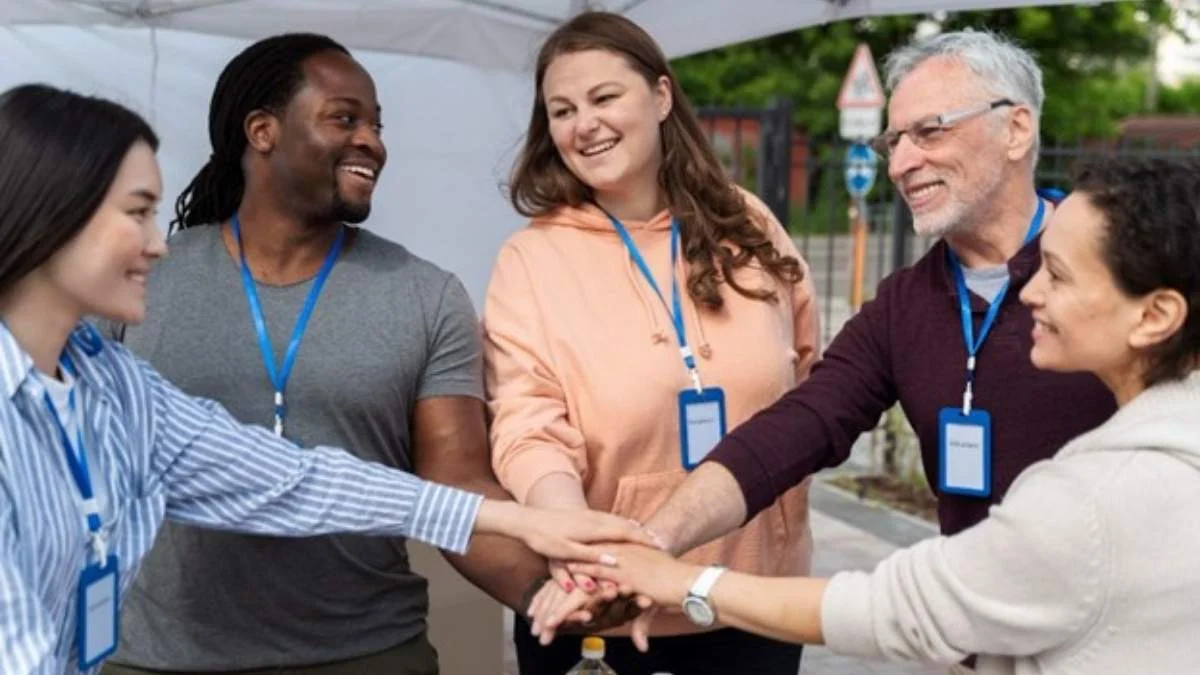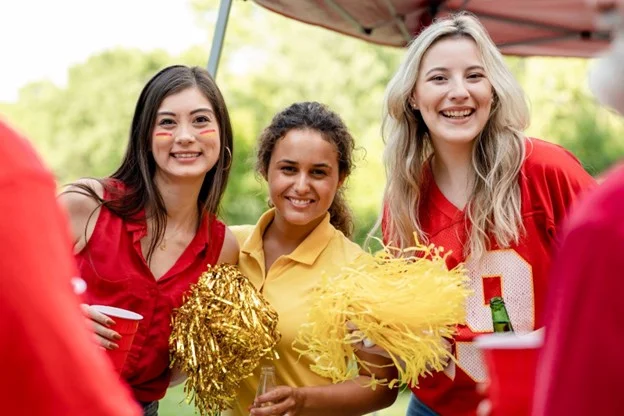GENERAL
Simple Ways to Build a Mindful Community

Digital convenience has connected billions, yet paradoxically left many feeling isolated. The antidote is found in small, simple wellness practices we can share in person. A mindful community isn’t just a meditation club. It’s any group committed to awareness, kindness, and collective growth.
This could be a sports team, a faith group, or even colleagues on a lunch-break stretch routine. When routines are consistent and inclusive, motivation turns from a sporadic spark into a steady flame.
Table of Contents
Practices for Building a Mindful Community
Creating a space for shared wellness can take many forms. The key is consistency and a focus on participation over perfection. Here are a few proven frameworks for weaving mindfulness into any group setting.
Group Meditation Sessions
Shared silence or guided reflection is a powerful way to build group coherence. Consider these simple formats:
- Guided: One person facilitates the session live, or the group listens to a recording from a mindfulness app.
- Silent: A predetermined amount of time is set for silent meditation, marked by a gentle bell at the beginning and end.
- Rotating Facilitators: Members take turns leading each week, sharing a reading, a prompt, or a specific breathing technique.
For instance, imagine a simple weekly ritual. A dozen neighbors gather at a city park overlook every Tuesday at 6 a.m. for a brief 15-minute sunrise meditation. A group like this often starts small, perhaps with just two friends. However, it can quickly expand its ranks to welcome a diverse mix, including retirees, college students, and sometimes a friendly pet.
The core insight for participants is that the gentle accountability of showing up for this shared time becomes the primary motivation that gets them out the door.
To foster a sense of shared purpose, some groups use physical reminders like Swagprint’s premium custom wristbands for teams, which can be stamped with a unifying mantra to serve as a tangible connection.
Mindful Communication Workshops
Active-listening circles and communication exercises train members to pause, paraphrase, and empathize. A simple format to try involves pairing up:
- Partner A speaks uninterrupted for two minutes on a given prompt.
- Partner B reflects back what they heard, without judgment or advice.
- Partners switch roles for the next round.
- The group debriefs together, sharing any feelings or needs that arose during the exercise.
Community Service Projects
When mindfulness meets compassionate action, communities thrive. Serving others together channels collective energy outward, strengthening internal bonds while making a tangible difference. Examples include beach clean-ups, preparing meals for local shelters, or visiting elder-care homes.
Benefits of Mindful Practices in Community Building
The positive effects of group wellness are not just anecdotal; they are backed by research and experience. When individuals practice together, the benefits often multiply.
Enhanced Emotional Well-being
Sharing a wellness journey helps normalize emotional challenges and provides a network of support. The feeling of “we’re in this together” fosters a profound sense of safety and belonging.
Group mindfulness practices are proven to reduce perceived stress and can be as effective as other established therapies for treating anxiety and depression.

Greater Resilience
Facing challenges is easier with a team at your back. A global study found that mindfulness significantly decreases perceived stress while boosting work engagement. This resilience comes from shared accountability, mutual encouragement, and the emotional validation received from trusted peers.
Increased Awareness of Community Needs
When a group gathers to reflect, their collective awareness often sharpens. Conversations can highlight local concerns, such as food insecurity or gaps in teen mental-health resources, that one person alone might overlook. This shared insight often becomes the catalyst for meaningful community service projects.
| Key Insight: Group wellness isn’t just about feeling good; it’s scientifically backed. Studies show group mindfulness reduces stress up to 26% more than solo practice, proving that shared accountability and support create profound resilience. |
Cultivating a Mindful Lifestyle
While group meetings are foundational, the goal is to integrate mindfulness into daily life. Encourage members to try these simple, accessible practices between gatherings.
Daily Mindfulness Exercises
- Breath Check-ins: Before starting a meeting or answering the phone, take a 30-second pause to notice three full breaths.
- Five-Sense Walks: During a walk, intentionally notice one thing you can see, one you can hear, one you can smell, and one you can feel.
Journaling for Reflection
A few minutes of writing can deepen the group experience. A simple nightly prompt can be: “How did our group support me today, and how did I support the group?” This practice sharpens gratitude and helps identify areas for growth.
| Pro Tip: Transform daily routines into mindfulness anchors. Connect a 30-second breath check-in to a recurring activity, like before a meeting or during your coffee break, to seamlessly build a consistent and effortless practice. |
Building Connections Through Events
Special events can energize a community and attract new members. These gatherings blend mindfulness with fun, creating memorable shared experiences.
Mindful Festival Celebrations
For a local health fair, set up booths offering mini-meditations or a station for blending herbal tea. You could also include a table with materials for writing gratitude letters to friends, family, or community helpers.

Outdoor Retreats
A day-long hike, a weekend of camping, or a simple cabin retreat can create deep bonds. Time in nature provides a perfect backdrop for quiet reflection and group dialogue. A basic checklist should include venue accessibility, a balanced itinerary, and emergency contacts.
The Role of Leadership in a Mindful Community
In a mindful community, leadership is less about authority and more about facilitation. Effective leaders model vulnerability, listen more than they speak, and foster a culture of shared responsibility.
This approach prevents any single person from becoming burnt out and empowers every member to contribute their unique skills. A practical way to implement this is to establish roles that rotate among members at each gathering.
Enriching Your Wellness Routine with Community
Integrating your wellness journey with others can amplify its benefits. Here are several practical ways to find your community:
- Join a Group Fitness Class: Studios for yoga, spin, or dance are natural hubs for like-minded people.
- Engage in Team Sports: A local pick-up soccer game or a volleyball league combines physical health with camaraderie.
- Attend a Wellness Retreat: Weekend camps focused on themes like digital detox or mindful movement abound.
- Join a Walking Group: Organize a simple walking club with colleagues during lunch breaks.
- Participate in Online Communities: When geography is a barrier, virtual groups can provide crucial support and accountability.
Embarking on the Journey Together
Mindful communities thrive on shared presence, compassionate action, and consistent practice. Whether you launch a sunrise meditation, volunteer at a local food bank, or host a monthly mindful potluck, the collective energy will elevate everyone’s well-being.
This month, gather two friends, pick one practice from the list above, and meet for just 30 minutes. See how it feels to share a moment of intentional wellness. Your small step could inspire the next mindful circle to form across town.
-

 GENERAL6 months ago
GENERAL6 months agoChristofle – For Those Who Dream of Family Heirloom Silver
-

 SPORTS8 months ago
SPORTS8 months agoDiscover the World of Football with Streameast: Watch Your Favorite Leagues and Tournaments
-

 GENERAL4 months ago
GENERAL4 months agoUncovering the World of кинокрадко: The Dark Side of Film Piracy
-

 GENERAL2 months ago
GENERAL2 months agoATFBooru: Anime, Gaming, and Subculture Imageboard























